Choosing a canoe paddle
On an average canoe trip you make at least 1000 strokes an hour. That adds up to around 8000 strokes per day and makes the paddle your primary working tool. Even more so than the canoe. Choosing a canoe paddle, the right canoe paddle, should be done with care and deliberation because it will have a defining impact on the development of your paddling skills and your overall technique. All too often choosing a canoe paddle comes as an afterthought. Most novice paddlers use the paddles they get for free with their first second hand canoe or they use any paddle they can find laying around in the boat shed. This comes at a cost, because using a badly sized canoe paddle prevents you from correctly mastering canoe strokes and paddle efficiently. It can also cause serious injury to arm and shoulder muscles. In short, you will loose the joy of canoeing.
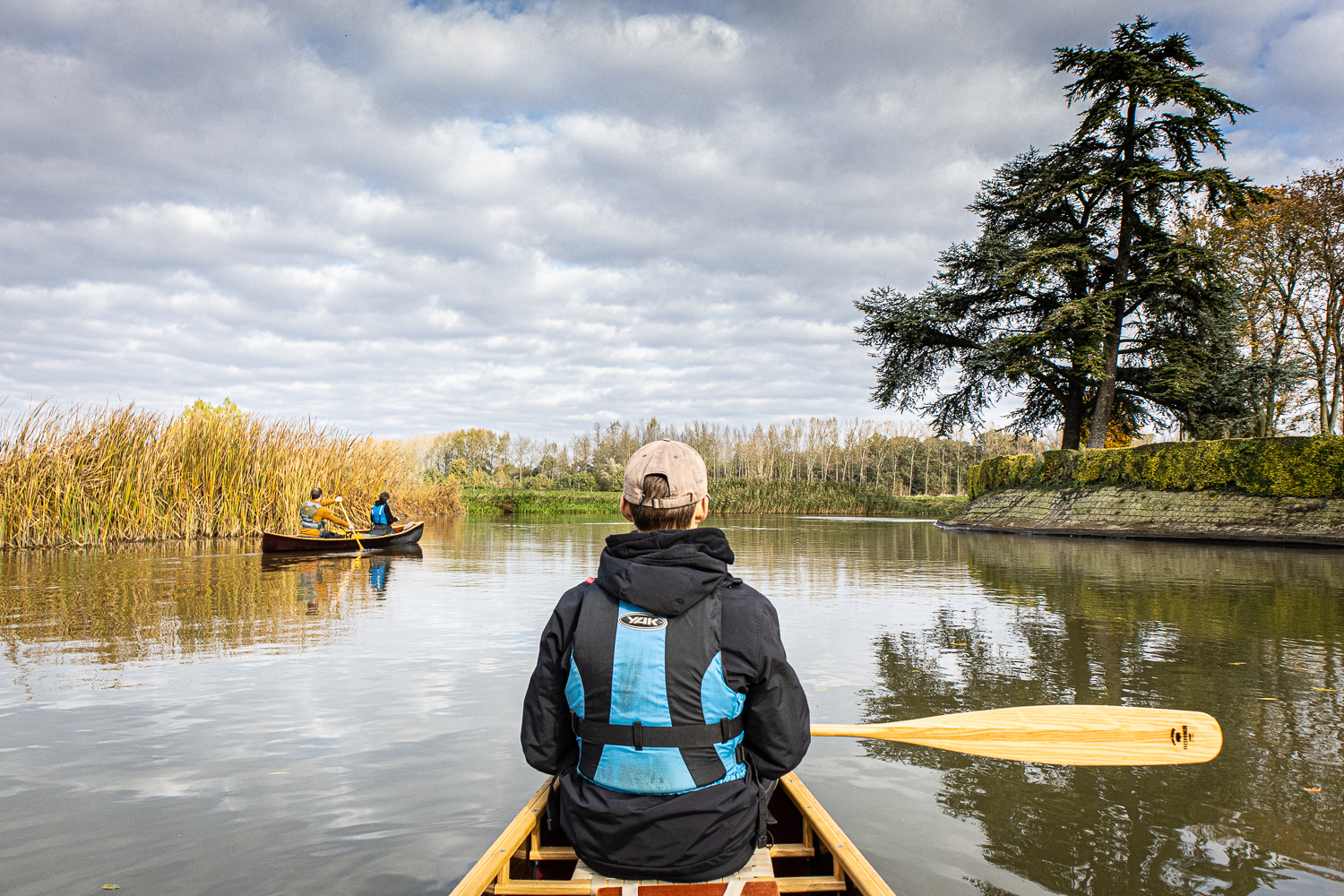
What's the purpose?
So, what is the right canoe paddle for you? The first thing to take into account when choosing a canoe paddle is the kind of water you will be paddling on. Will you be paddling mostly whitewater and shallow rivers or will it be big rivers, lakes and flat water in general? Paddles with short wide blades are most appropriate for whitewater because they help you make forceful, fast strokes even when the blade seems to barely touch the water. For flat water on the other hand you will be better served with a paddle with a longer and slender blade. These need to be paddled at a slightly higher stroke rate, but each stroke requires less effort. This is easier on your arms and shoulders in the long run, especially on multi day adventures. Blades that are long and narrow give greater overall control and build up pressure gradually resulting in smoother strokes.
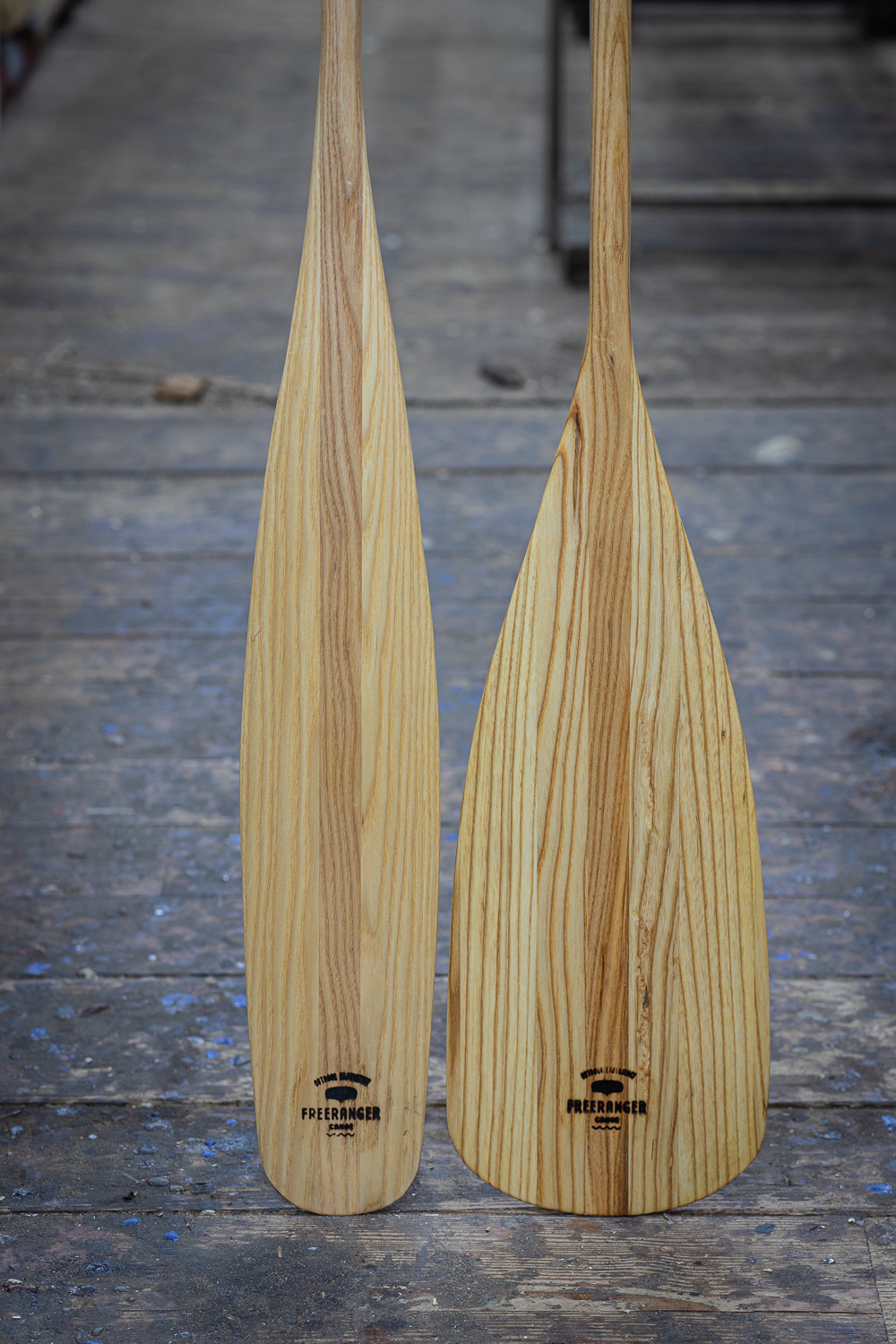
How to size a canoe paddle?
The most efficient part of the power phase of your forward stroke is the moment when the blade is fully immersed and you keep the shaft vertical and the arm of your grip hand horizontal. In other words, roughly in the middle of your stroke. Your grip hand should be at the height of your shoulder, while the throat of the paddle, where the blade meets the shaft, should be at the waterline.
Keep this in mind when choosing a canoe paddle. Sizing the paddle is best done on the water in your own canoe. The length of the shaft is dependent on your seating position, the height of the seats and the freeboard of the canoe. Sit in the canoe and measure the vertical distance from your horizontally outreached hand to the waterline. This measurement matches the distance from a paddle’s grip to the throat, where the paddle shaft meets the blade.
On land, trying out a paddle: sit down on a flat surface. Hold the paddle upside down, place the grip between your legs. The throat of the paddle should be between your eyes. Without a paddle at hand, measure the distance between your bottom and your eyes.
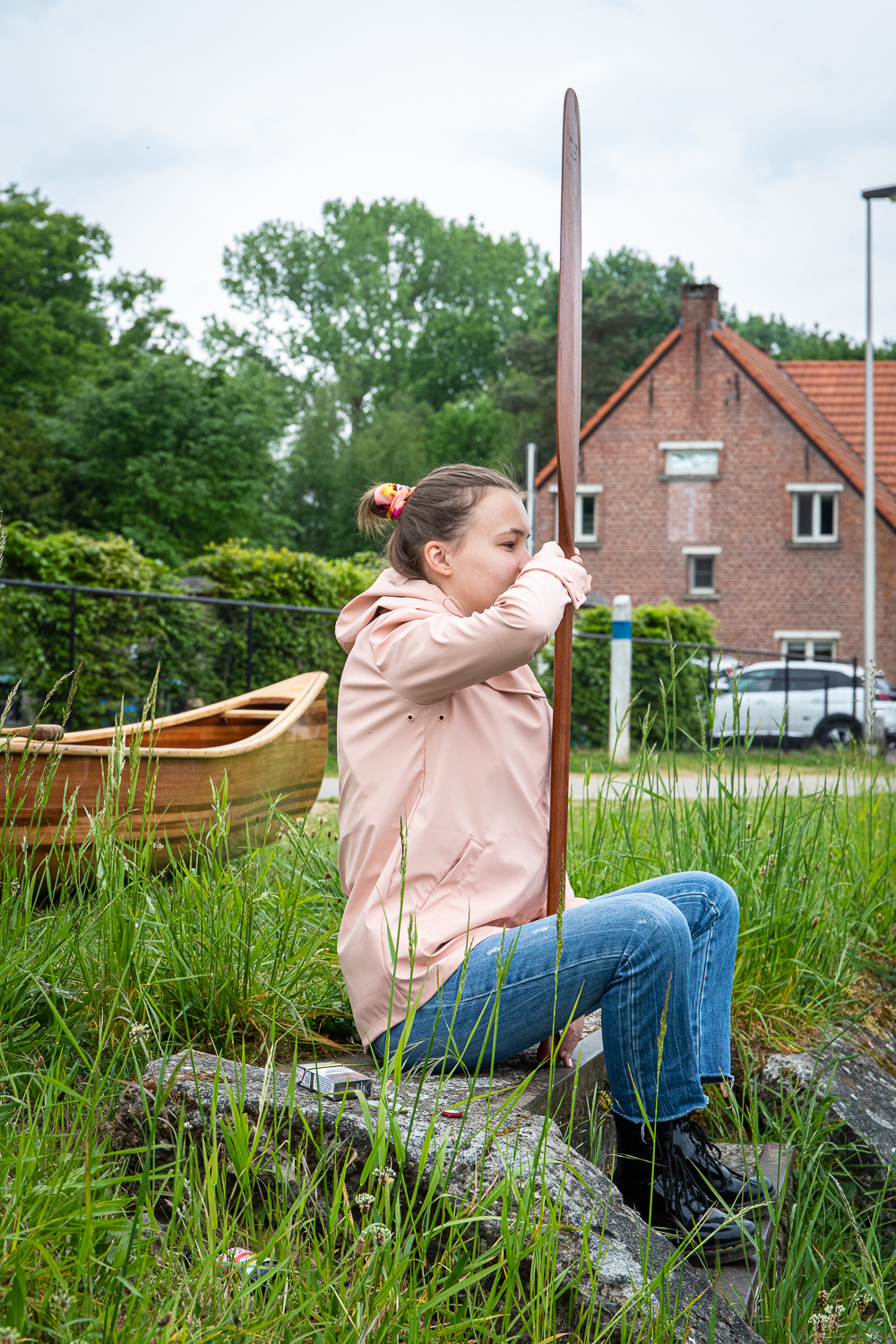
Which blade?
When choosing a canoe paddle you will notice they come in a variety of shapes and sizes. They can be short and wide or long and narrow but what’s really defining is the positioning of the pressure point. In essence all canoe paddles are variations on the classic ottertail and beavertail paddles. The ottertail paddle is characterized by a blade shape where the maximum width of the blade occurs above the mid point of the blade whereas a beavertail has its maximum width situated at the bottom. The widest part of the paddle is the pressure point and it gives you the greatest impact on the water resulting in immediate impact.
A beavertail with a lower pressure point gives you a more direct « catch » but also requires more strength. You’ll be paddling on power, rather than finesse. The beavertail is an excellent all-round paddle for trips and wilderness travel alike. An ottertail is a gentler paddle because it builds up water displacement gradually. The pressure point becomes fully immersed at the moment the blade is vertically in the water. That is the most efficient part of the power phase. This makes the ottertail less stressful and a wonderful paddle for longer distances, less powerful paddlers and solo paddlers. The ottertail is also the go-to paddle for more expert strokes such as the Indian and Guide strokes because it slices more smoothly through the water thanks to the narrow tip.
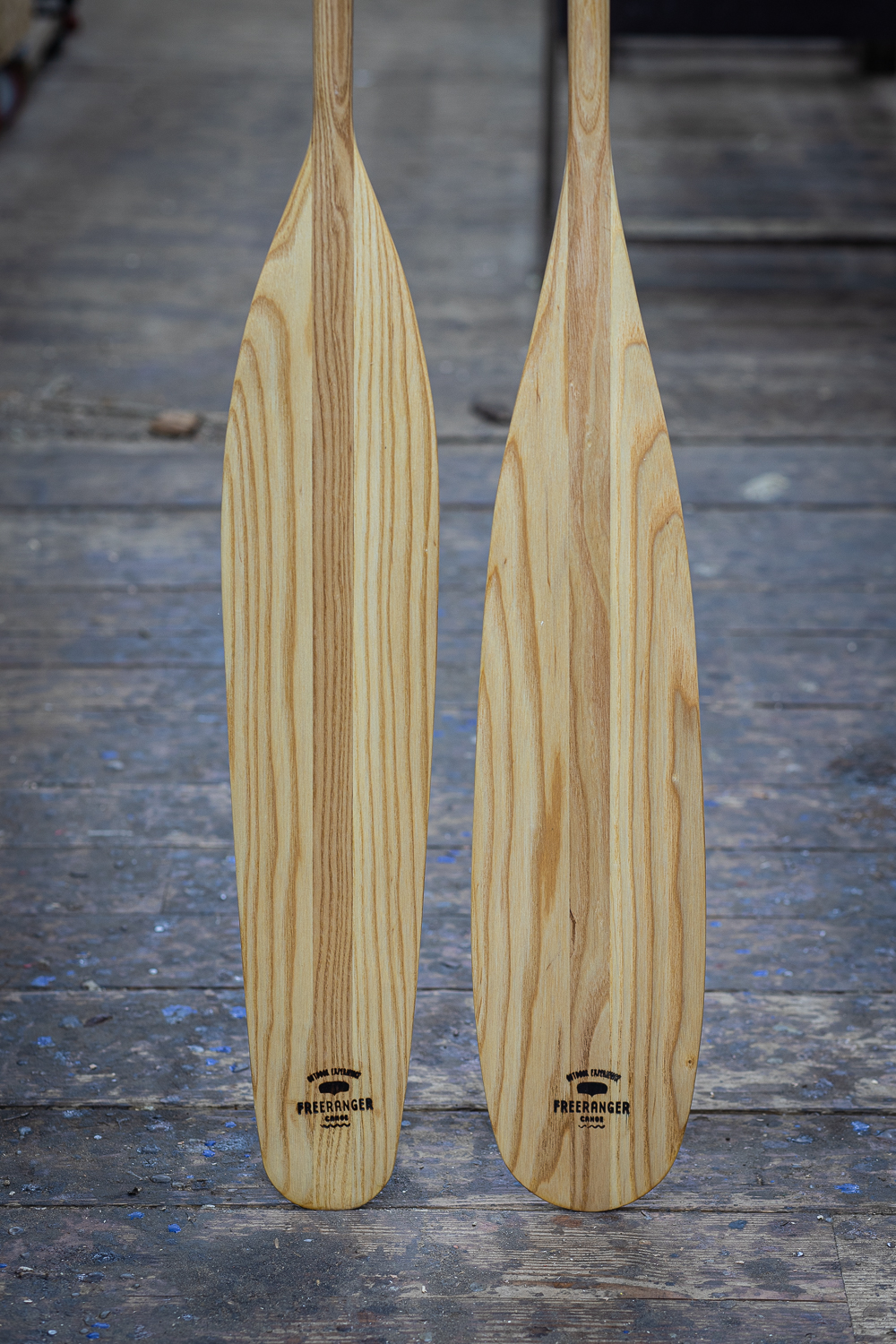
Grips
There are 2 common shapes. The pear grip offers flat water paddlers excellent comfort and control. The shape fits naturally into the palm of your hand and is comfortable for long trips. Most paddles have a palm grip. It’s also appropriate for more advanced paddling when the palm roll comes into play. The T-grip lets you wrap your fingers around the handle, so it offers a tight and sure grip. Because of this, it is the preferred shape for whitewater paddlers.
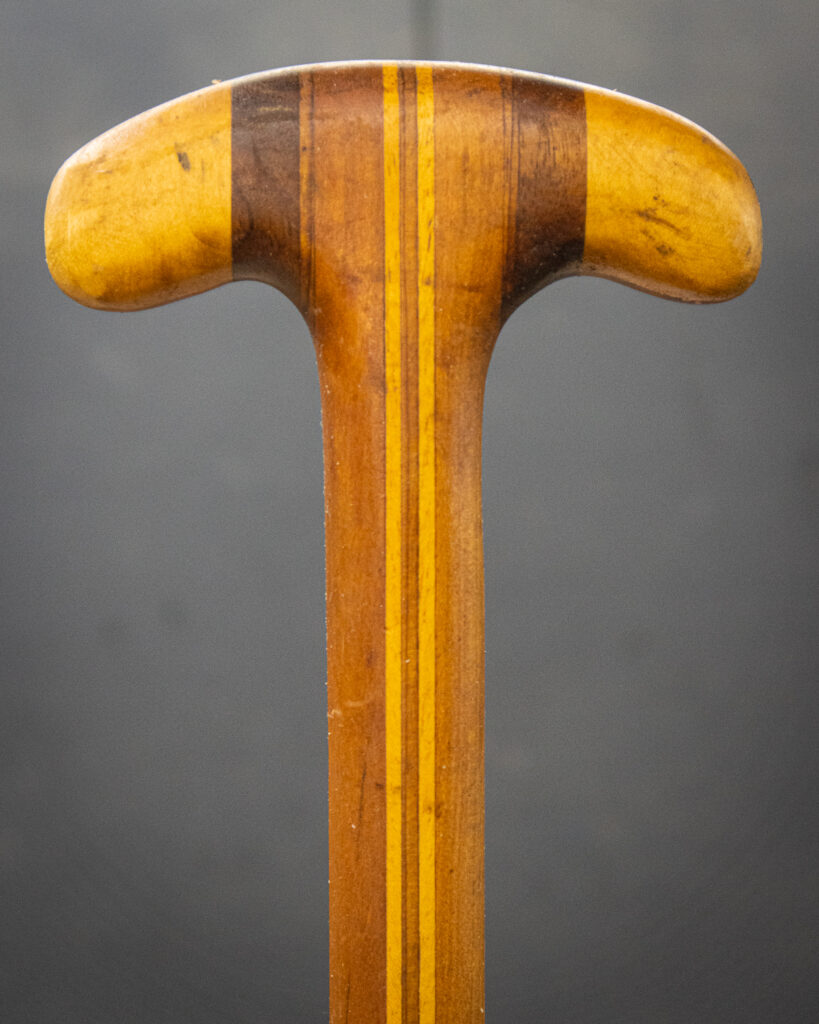
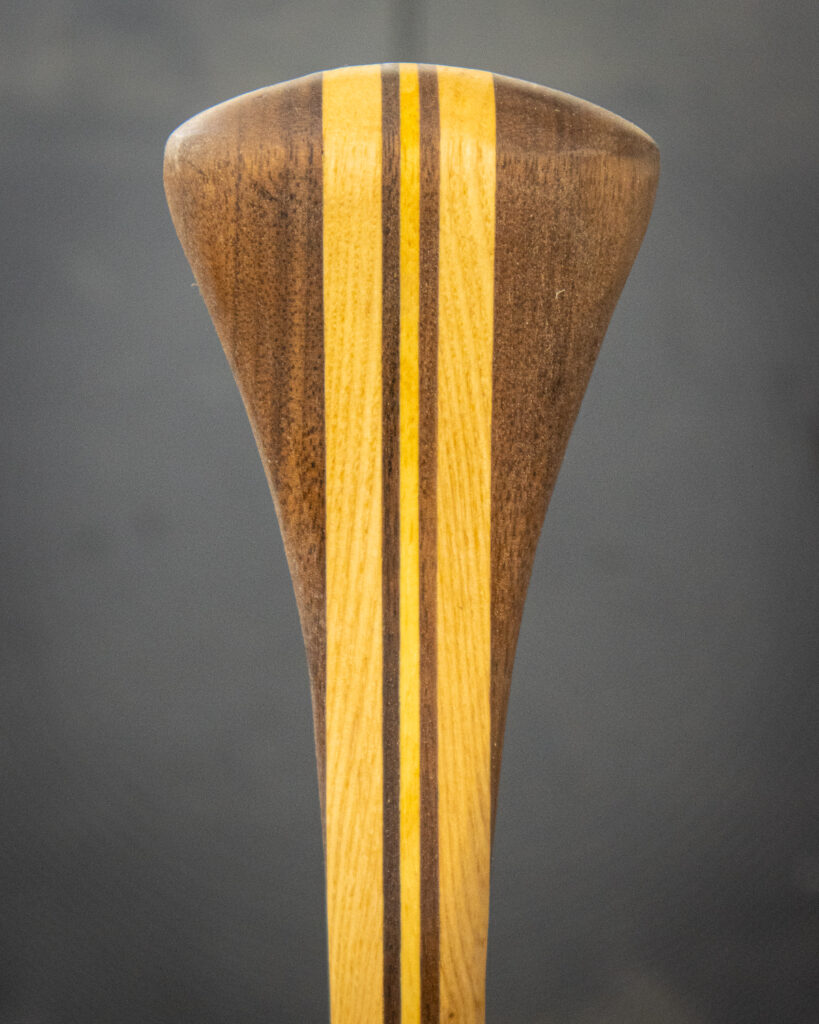
Wooden canoe paddles
Wooden paddles are classic. Synthetic materials can’t match their liveliness, flexibility and warmth. They’re often slightly heavier than composite paddles, but are lighter than paddles with plastic or aluminum parts. Wood does require some upkeep. Oiling a paddle takes 15 minutes but it’s a very gratifying job because your paddle will look like new afterwards. Laminated wood paddles aren’t the same as traditional wood paddles. They’re strips of wood glued together and feature a mix of heavier and lighter woods. They often weigh less but they’re also slightly stiffer. What they lose in flexibility and shock absorption, they make up for in their strength.
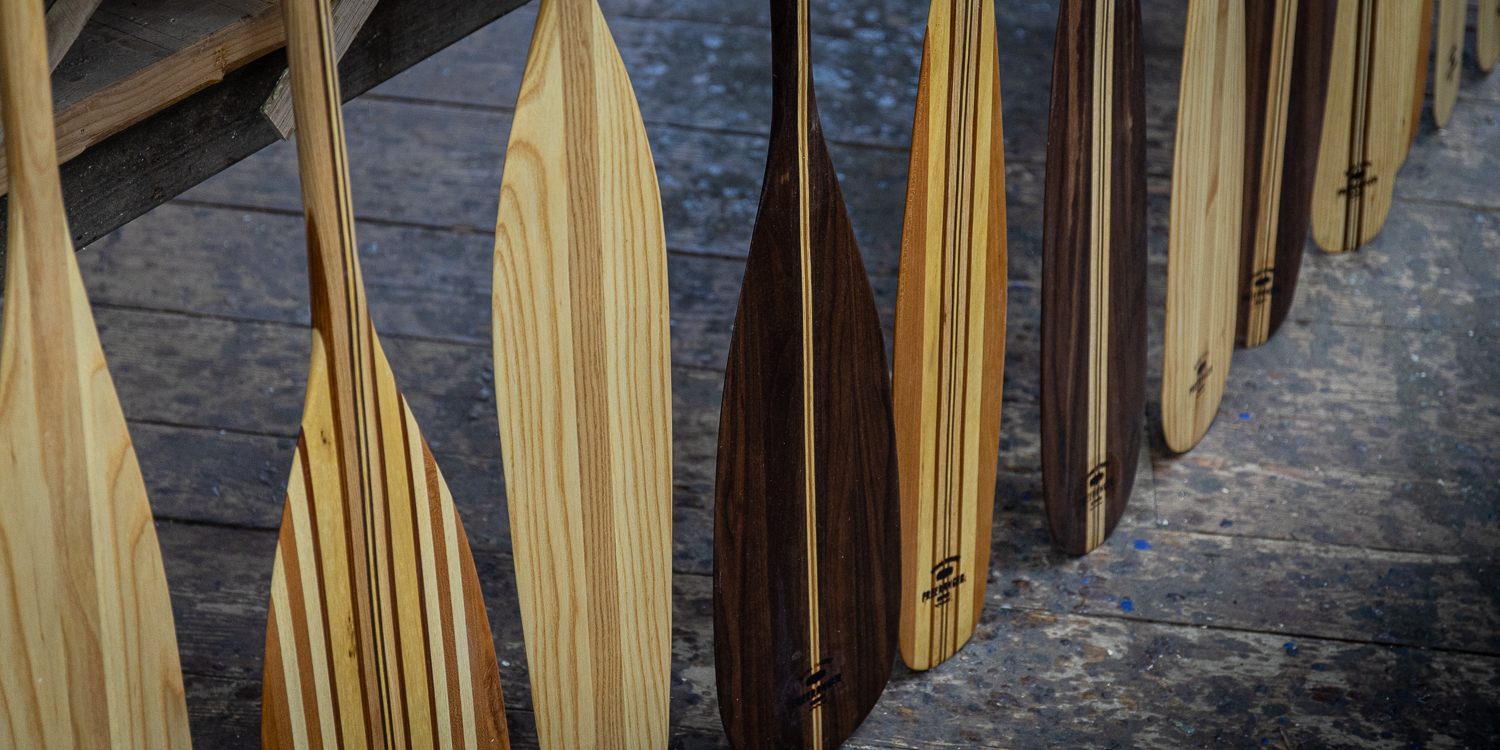
Always take a spare
It’s a good idea to carry a spare paddle for safety’s sake. In a capsize you can loose your paddle or it can break or get damaged in other ways. Although a basic backup will probably meet your needs, there’s no harm in having an extra paddle that’s suited to a more specific purpose, just in case conditions change or you want to explore somewhere new. Always keep in mind that the paddle is your primary tool in the canoe. Without it you’re lost.
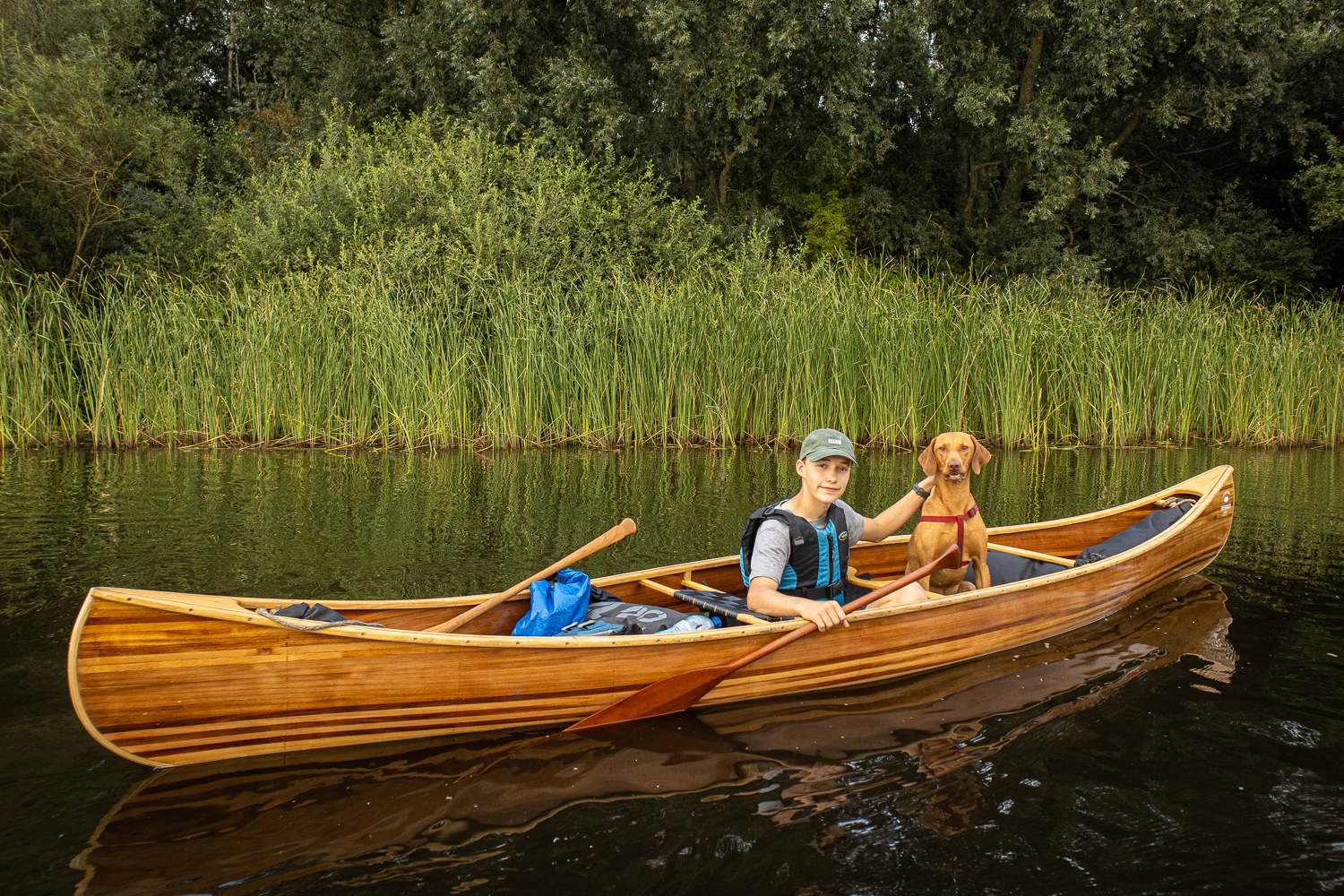
Store your canoe paddle properly
You can find lots of resources online for building your own simple paddle rack or holder or you can just place it flat somewhere in your house or garage. Keep it out of the sun and store it in a dry place over the winter where moisture won’t find it’s way into the wood. Remember that storing your canoe is just as important as storing your paddle! When transporting it’s a good idea to carry your paddles in a decent paddle bag to prevent damages.
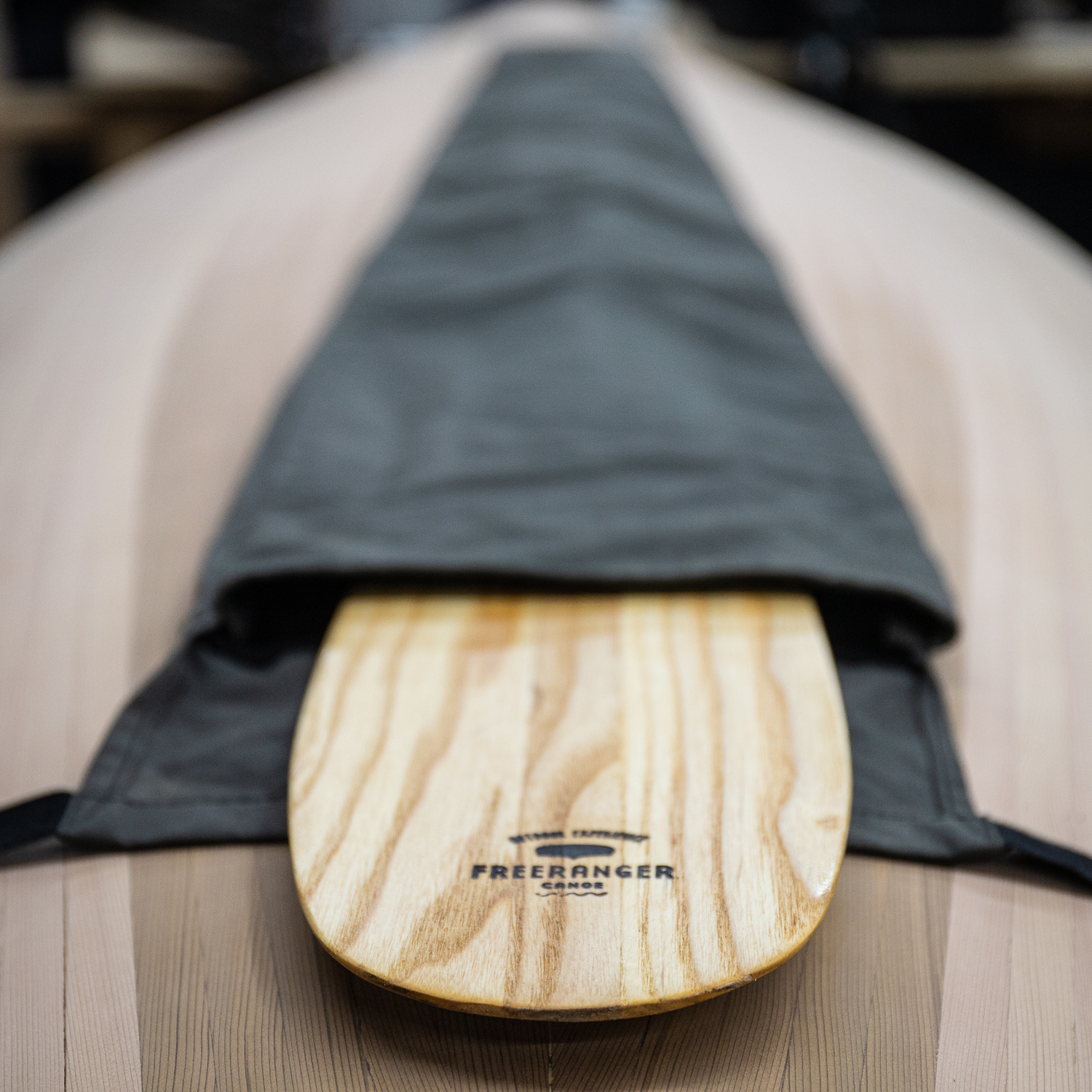
Socks for wooden canoe paddles
On a canoe trip, slip a football sock over your paddle blade and grip on portages or at the campsite. This is an easy way to protect your wooden canoe paddle and can help maintain the beautiful aesthetic of it. Many people have their canoe paddles for decades if they are well taken care of. Don’t make your decision solely based on price. A well-made paddle that fits your canoeing needs and feels great to use is worth caring for.
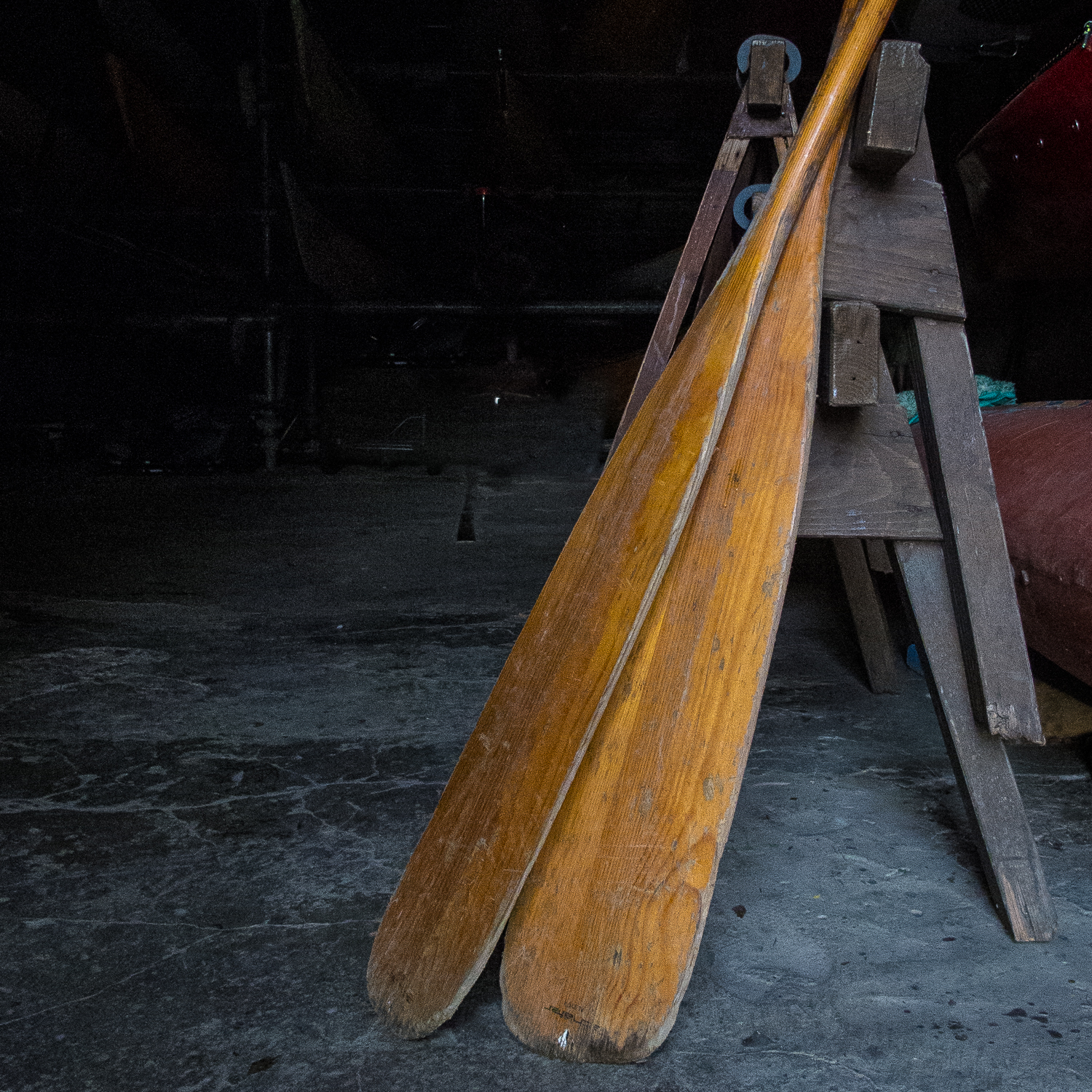
Paddle care
Paddle care
Your wooden paddle does not require much maintenance if you take care of it between trips and repair any damage. Wipe of dirt before storing and always keep it in a dry place. We clean our oiled paddles after each trip with a Scotchbrite pad and give it a new layer of double boiled linseed oil or Danish oil. It takes 5 minutes of work to keep your paddle in top condition.
If your varnished paddle is scratched and you want to restore it:
• Sand the damaged spot with fine sanding paper (280 grit)
• Apply two layers of satin marine varnish (no water based varnish!)
• When the second layer is dry your paddle is ready.
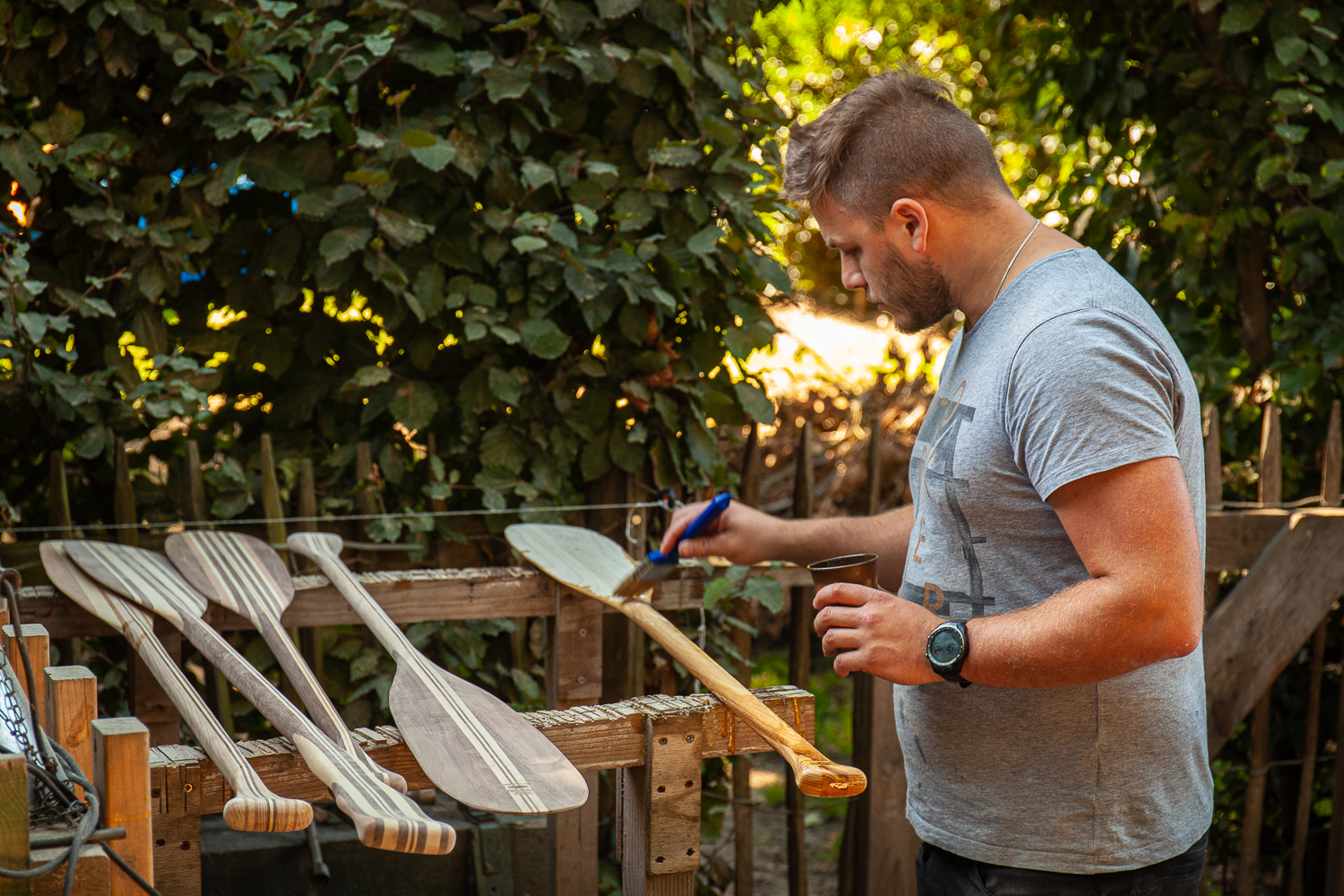


Hi – This is a great article – covering the key points clearly and succinctly. Good job!I’ve been monitoring your site for a while now and believe you have some of the best posting I’ve found anywhere. I’ve posted links to several of you articles, including the one on the Northwoods stroke in the “Featured Reads” section of our web site. They are very well written and convey the key information in a succinct and and easily understood way.
I hope to get to visit your shop at some point in the future. And if you’re ever visiting the Massachusetts North Shore I hop you find the time to swing by our shop, White Rose Canoe.
Thanks.
Thank you for sharing, Keith. Also for the invite, I will keep it in mind.